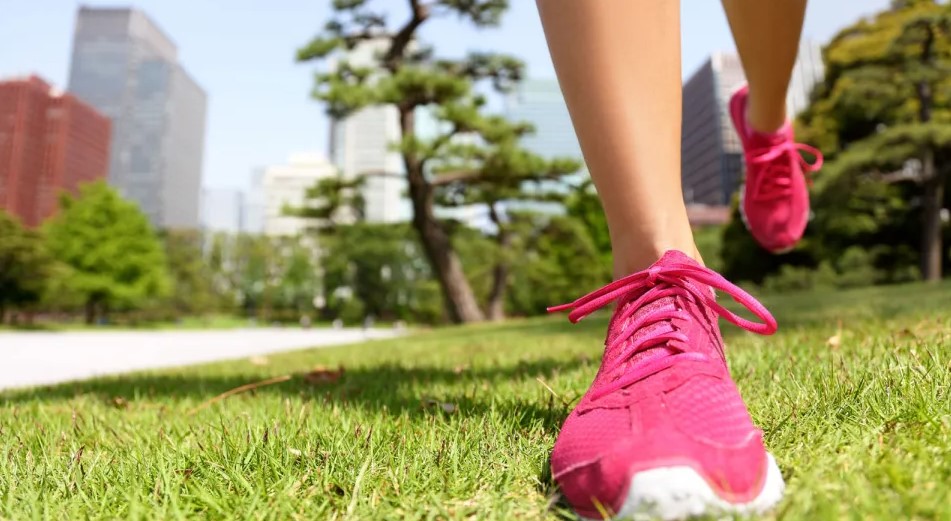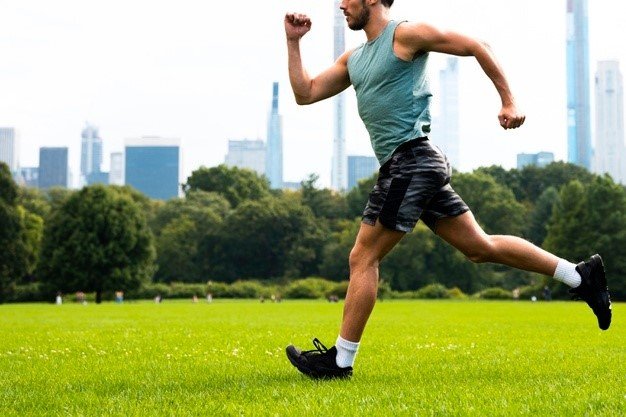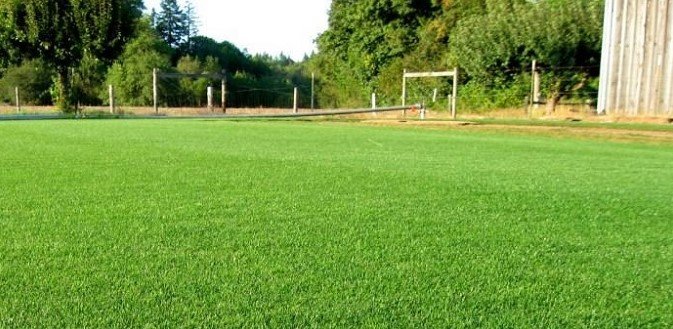The best part about running is that you can run on a variety of surfaces. If you’re running on green grass, consider yourself lucky for getting a natural track. However, this healthy track is not the fastest surface to run. Rather, your pace will decrease on the tall grass surface.
But how much slower is running on grass?
You will have a decreased running pace of 15 to 30 seconds per mile while running on grass, compared to other hard surfaces.
For sprinters and short-distance runners, this kind of slower pace may seem alarming. On the bright side, a grass track is better than concrete and asphalt if you’re concerned only about the speed. But, that’s not everything.
There are more facts to know about slowness on grass and its impact on your health. Why not get through them?
How Much Slower Is Running On Grass?
According to the law of physics, if the surface does not absorb the impact you are making, it’ll return the impact. Thereby choosing an elastic and soft surface for running on is always recommended. Grass surfaces are soft and elastic. This implies that it is an ideal surface to run.
Since the surface is absorbing energy rather than throwing it back, you’ll not get enough support from the track for taking the next step. As a result, your running speed will start to slow down.
For example, when you run on an asphalt track, asphalt is not absorbing much of the energy. It is returning the potential energy to your feet that keeps you running at a greater speed. The thing is opposite for grass surface. Grassroots and the soil ground absorb the majority of your kinetic energy. Thereby, you must push your feet with further energy.
The processing time between your stepping on the grass and taking the next step is increasing the slowness by 15 to 30 seconds per mile. The next time you consider running on grass, make sure that the timing will not make you tense.
Though it takes a little more time and makes you slow, the benefit from the grass surface is the best.
Does Running On Grass Make You Faster?
At first, you might think that running on grass requires more effort that makes me slower. Soon, you’ll realize that the extra effort is a blessing for your running pace.
When you’re capable of running on a slow ground with higher effort, it keeps increasing your energy level. After you shift to a synthetic running track or asphalt running track, the inelastic surface will support your running more.
And, you’ll be surprised to find out the speed on the regular forgiving surface. In general, the missing 15-30 seconds on the grass track will be returned with an increased 40-75 seconds on a regular running track. Isn’t this amazing?
Do you know where Usain Bolt runs daily? He practices sprinting and regular running on beaches. Sand absorbs most of the energy and this helps to build the thrust for running on a regular track. The same thing happens with the grass track.
Once you are capable of running on a grass track with the target of lowering the speed, this will impact positively during your sprint on a regular track. The outcome is enormously helpful for building strong calf muscle and elastic joints.
Tips To Run Faster On Grass Easily
When you require covering up the “decreased” 15 to 30 seconds per mile on the grass track, it is mandatory to follow some tips. Our expert runners suggested something special to improve your running skill on grass surfaces.
Look ahead
A lot of runners have the bad habit to look down while running. We are saying it is a bad habit because of the potential risk. Apart from the treadmill and synthetic running ground, all the other softer surfaces may have potholes, sharp pieces, and things that may hurt your feet.
In the case of grass track, the risk is more. When you’re running on a grass surface, there might be a pothole right after 5 steps. How can you notice that if you’re looking straight down? And, this is the first tip for running on the grass at a faster pace.
By looking five steps ahead of you, it gets easier to notice what is coming up. This increases the speed, and you’ll get to increase the running speed eventually.
Wear the right shoes
Many runners run barefoot. Never do this if you are considering keeping good and healthy feet! The appropriate and Perfect Shoes for Running On Grass are a must to run faster on grass.
If you’ve read the above sections, the fact about potential energy from the surface should be clear now. The right shoe will give you the energy to step ahead even though the surface is absorbing the energy. Physicians recommend wearing a soft and comfortable insole for running faster on grass.
Avoid patches of grass
Another factor that reduces running speed on grass surfaces is thick patches. There are some green, fresh, and high grasses on the ground. These patches affect the running pace. The curator of the ground may forget to trim those areas. In local grass fields, the thick patches are the most. You can look for a well-trimmed grass surface nearby to run regularly.
Grass patches affect your speed by slowing down your foot’s movement. Avoid these while running and the rest of the running experience will be enormously helpful.
Final Thought
Just because the grass surface is slowing down your speed, it does not reduce running benefits. Rather, it is one of the best surfaces to run for avoiding overuse injuries, pain, shin splints, and suffering. Choose ground properly. If you find patches or potholes, contact the ground curator to take care of them.
And now that you know how much slower is running on grass, you also have the idea of the benefits out of it. It’s justifiable slowing down by 15-30 seconds per mile while running on grass given the benefits you’re getting.



